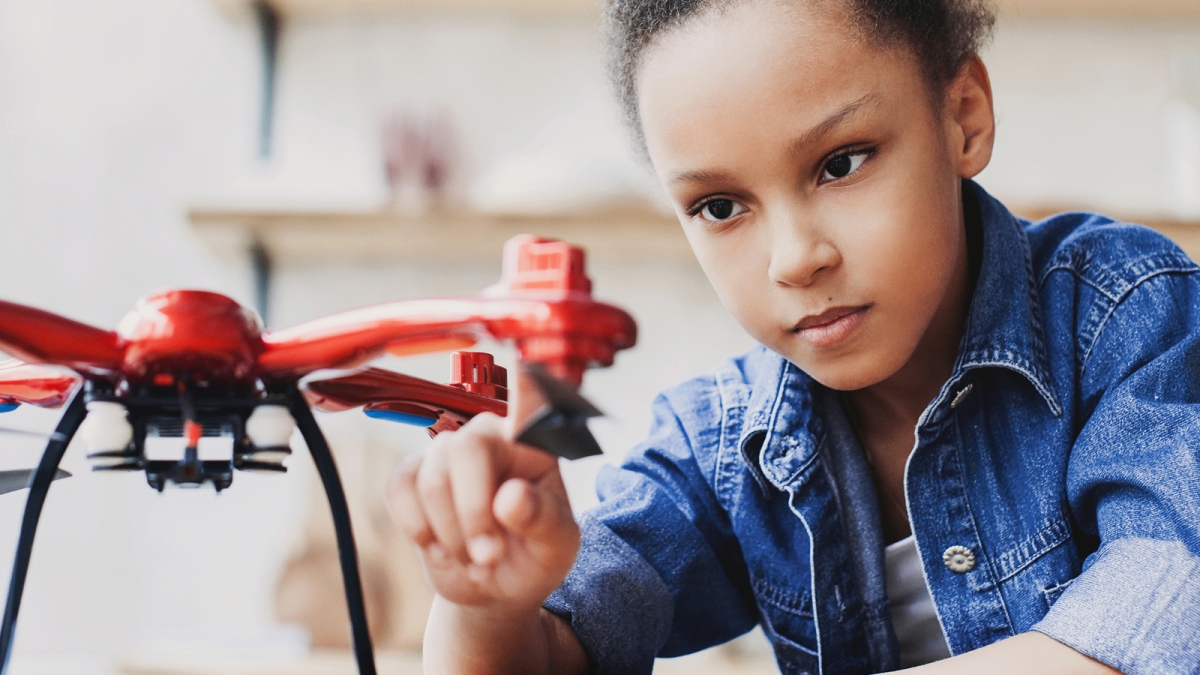ASU student leads 'Million Girls Moonshot' movement at Intel Foundation

The Million Girls Moonshot initiative aims to bring STEM to underrepresented communities.
As STEM careers move toward closing the gender gap, engaging girls early on in science and technology is essential. The Intel Foundation just announced their Million Girls Moonshot initiative to introduce kids in underrepresented communities to STEM education.
Million Girls Moonshot is a collaborative, nationwide movement involving a wide range of cross-sector partners that is designed to break down the systemic barriers that have kept girls and youth of color out of STEM.
Gabriella Gonzales, deputy director at the Intel Foundation and a PhD candidate at Arizona State University's School for the Future of Innovation in Society helped to develop this initiative as the need for diversity in engineering grows.
“To solve today’s most pressing problems – from health pandemics, to climate change, to economic uncertainty and more — we must tap into the great potential embodied in our nation’s girls,” Gonzales said.
Million Girls Moonshot is a collaboration with the STEM Next Opportunity Fund, Gordon and Betty Moore Foundation, and the Charles Stewart Mott Foundation. It aims to educate girls in underserved communities in the areas of STEM and connect them to resources and opportunities in the fields of science and engineering.
Gonzales said the development process for this movement took several years. It began with her applying new approaches to girls in underserved communities that did not express interest in STEM, did not historically perform well in science or math or were in socio-economical situations that did not allow them to fully participate in STEM opportunities. After 15 years of practicing different methods of successfully engaging girls in middle and high school, she realized it was time to take it to the next level.
“My vision is to generate STEM opportunities that are more inclusive and equitable for all girls so that they learn to apply an engineering mindset to improve the quality of life for themselves, their families, and generations to come,” Gonzales said.
Working as a Latina woman in STEM, Gonzales said it was not always easy. She had to overcome the challenges that are primarily rooted in systemic barriers and stereotypes, and oftentimes prove herself to her colleagues.
“My first supervisor told me that I wasn’t his first choice because he had not heard anything good about Hispanic people. His impression was that Hispanics were generally lazy and not interested in doing a good job. After my rotation, he told me that I had helped change his mind about what Hispanics could aspire to achieve and accomplish,” Gonzales said.
Through her gender studies certificate education at the School of Social Transformation, Gonzales said she has a much better appreciation and understanding for the dynamics between technology and society, and the role, challenges and contributions of women through historical, social, economic and cultural lenses.
She is now a PhD candidate at the School for the Future of Innovation in Society, and continues to research and experiment with different methods that engage and educate young girls, particularly girls of color in underserved communities.
“Ideally, more organizations will join the movement and we will start to see real change in the lives of millions of girls, and their families, who up until now have had limited or zero access to high-quality STEM education resources,” Gonzales said. “By inspiring and engaging them in STEM pursuits, more girls from all backgrounds will reimagine themselves to become the breakthrough scientists, inventors, builders, engineers and entrepreneurs of tomorrow that will drive our society forward.”
More Science and technology

ASU postdoctoral researcher leads initiative to support graduate student mental health
Olivia Davis had firsthand experience with anxiety and OCD before she entered grad school. Then, during the pandemic and as a…

ASU graduate student researching interplay between family dynamics, ADHD
The symptoms of attention deficit hyperactivity disorder (ADHD) — which include daydreaming, making careless mistakes or taking…

Will this antibiotic work? ASU scientists develop rapid bacterial tests
Bacteria multiply at an astonishing rate, sometimes doubling in number in under four minutes. Imagine a doctor faced with a…